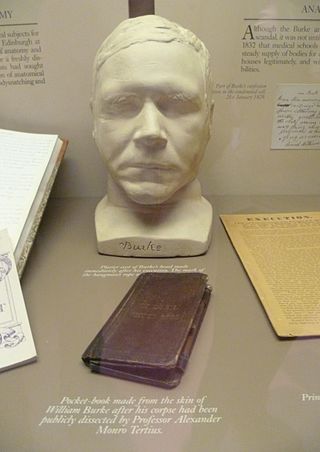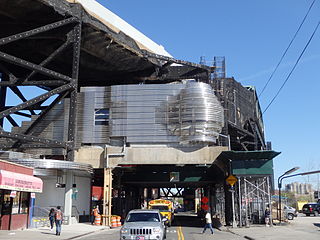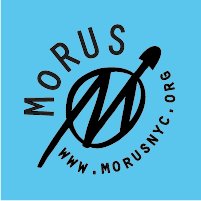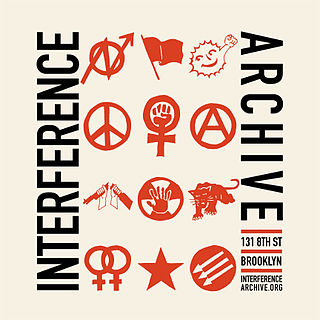
Coney Island is a peninsular neighborhood and entertainment area in the southwestern section of the New York City borough of Brooklyn. The neighborhood is bounded by Brighton Beach and Manhattan Beach to its east, Lower New York Bay to the south and west, and Gravesend to the north and includes the subsection of Sea Gate on its west. More broadly, the Coney Island peninsula consists of Coney Island proper, Brighton Beach, and Manhattan Beach. This was formerly the westernmost of the Outer Barrier islands on the southern shore of Long Island, but in the early 20th century it became a peninsula, connected to the rest of Long Island by land fill.

Gowanus is a neighborhood in the northwestern portion of the New York City borough of Brooklyn, within the area once known as South Brooklyn. The neighborhood is part of Brooklyn Community District 6. Gowanus is bounded by Wyckoff Street on the north, Fourth Avenue on the east, the Gowanus Expressway to the south, and Bond Street to the west.

South Brooklyn is a historic term for a section of the former City of Brooklyn – now the New York City borough of Brooklyn – encompassing what are now the Boerum Hill, Carroll Gardens, Cobble Hill, Gowanus, Park Slope, Windsor Terrace, Sunset Park and Red Hook neighborhoods. It was named for its location along the waterfront that was the southern border of the original Village of Brooklyn, and has remained widely used as a colloquialism despite it no longer being the southernmost point of the borough. It should not be confused with the geographic southern region of the modern borough of Brooklyn, which includes the neighborhoods of Gravesend, Seagate, Coney Island, Brighton Beach, Manhattan Beach, Sheepshead Bay, Gerritsen Beach, Marine Park, Mill Basin, and Bergen Beach.

Anthropodermic bibliopegy is the practice of binding books in human skin. As of April 2022, The Anthropodermic Book Project has examined 31 out of 50 books in public institutions supposed to have anthropodermic bindings, of which 18 have been confirmed as human and 13 have been demonstrated to be animal leather instead.

The Smith–Ninth Streets station is a local station on the IND Culver Line of the New York City Subway. It is located over the Gowanus Canal near the intersection of Smith and Ninth Streets in Gowanus, Brooklyn, and is served by the F and G trains at all times. The station is 87.5 feet (26.7 m) above ground level and was formerly the highest rapid transit station in the world.

Tonya Hurley is an American writer and director in film, television, live performance, and interactive media, known as co-creator and co-producer of the 2001 television series So Little Time, which featured the Olsen twins. Her work with them continued in Mary-Kate and Ashley in Action!, spanning 4 episodes, and as co-executive producer of various tie-in video games.
Minus Space is an art gallery located in Dumbo, Brooklyn, NY. It specializes in abstract art and reductive art.
Gregory William Frux is a traditional realist artist, working mainly in the landscape genre. His oil paintings document both New York’s cityscapes and wilderness locations in North and South America.
Frank Shifreen is an American artist, curator, and teacher. Shifreen played a significant part in the art movement of New York City in the early 1980s, organizing massive artist-run shows that brought thousands of people to Gowanus, Brooklyn. Since then, he has organized socially conscious art exhibitions across the United States and abroad, including From the Ashes, a massive exhibition organized in the aftermath of 9/11. A neo-expressionist and social sculptor, he is a graduate of the Pratt Institute and Adelphi University, he is currently finishing a doctorate in art and art education at the Teachers College at Columbia University.
The Gowanus Memorial Artyard was a nonprofit, artist-organized group that put together massive outdoor and indoor art exhibitions in Gowanus, Brooklyn, New York City in the early 1980s. Founded by artists and curators Michael Keene, Frank Shifreen, and George Moore, the shows featured monumental sculpture parks next to the Gowanus Canal. The two major shows attracted thousands of visitors during their brief runs in 1981 and 1982. The participants artists such as Carl Andre, Andy Warhol-sponsored Keith Haring, Christo, Linda and Terry Jamison, Vito Acconci, Nancy Holt, John Fekner, the controversial Chris Burden, sculptor Jim Nickel, and Fred Wilson.

The Museum of Reclaimed Urban Space (MoRUS) is a not-for profit museum dedicated to archiving the history of community gardens, squatting, and grassroots environmental activism of the Lower East Side neighborhood of Manhattan, New York City. Located in the storefront of C-Squat at 155 Avenue C, the museum documents how neighborhood residents transformed abandoned spaces and lots in the neighborhood into squats and gardens. By preserving the neighborhood's history, the museum aims to educate communities and individuals to keep this form of sustainable, community-based activism alive.

Interference Archive is a volunteer-run library, gallery, and archive of historical materials related to social and political activism and movements. Located in the Park Slope neighborhood of Brooklyn, New York City, at 314 7th Street, with in the zip code 11215, its mission is "to explore the relationship between cultural production and social movements."
Greg Smith is an American interdisciplinary artist based in Brooklyn, New York whose practice consists of installation art, sculpture, and video.
Gabriele Evertz is an American painter, curator and professor who is applying the history and theory of color in her work. She is known for abstract color painting and Geometric abstraction.

Kameelah Janan Rasheed is an American writer, educator, and artist from East Palo Alto, California. She is a 2021 Guggenheim Fellow in Fine Arts known for her work in installations, book arts, immersive text-based installations, large-scale public text pieces, publications, collage, and audio recordings. Rasheed's art explores memory, ritual, discursive regimes, historiography, and archival practices through the use of fragments and historical residue. Based in Brooklyn, NY, she is currently the Arts Editor for SPOOK magazine. In 2021 her work was featured in an Art 21 documentary, "The Edge of Legibility."
Colin Dickey is an American author, curator, and critic whose work deals with ghosts, death, and haunting, and explores how these symbols function as metaphors. He was the Managing Director of the Morbid Anatomy Museum and is a member of The Order of the Good Death. He currently teaches at National University
Aaron G. Beebe is an American artist and curator working in Brooklyn, NY. He was the Director of the Coney Island Museum., is a co-founder of the Morbid Anatomy Museum and is the creator of the Congress for Curious People

Joanna Pousette-Dart is an American abstract artist, based in New York City. She is best known for her distinctive shaped-canvas paintings, which typically consist of two or three stacked, curved-edge planes whose arrangements—from slightly precarious to nested—convey a sense of momentary balance with the potential to rock, tilt or slip. She overlays the planes with meandering, variable arabesque lines that delineate interior shapes and contours, often echoing the curves of the supports. Her work draws on diverse inspirations, including the landscapes of the American Southwest, Islamic, Mozarabic and Catalan art, Chinese landscape painting and calligraphy, and Mayan art, as well as early and mid-20th-century modernism. Critic John Yau writes that her shaped canvasses explore "the meeting place between abstraction and landscape, quietly expanding on the work of predecessors", through a combination of personal geometry and linear structure that creates "a sense of constant and latent movement."
Zachary Fabri is a multidisciplinary artist based in Brooklyn, NY.











